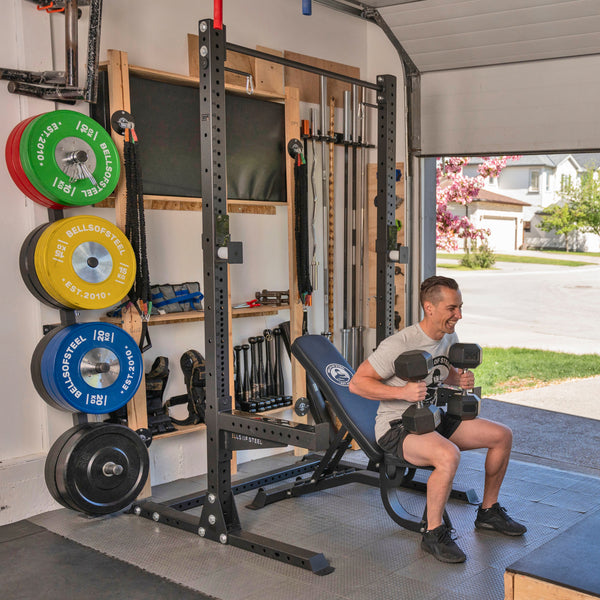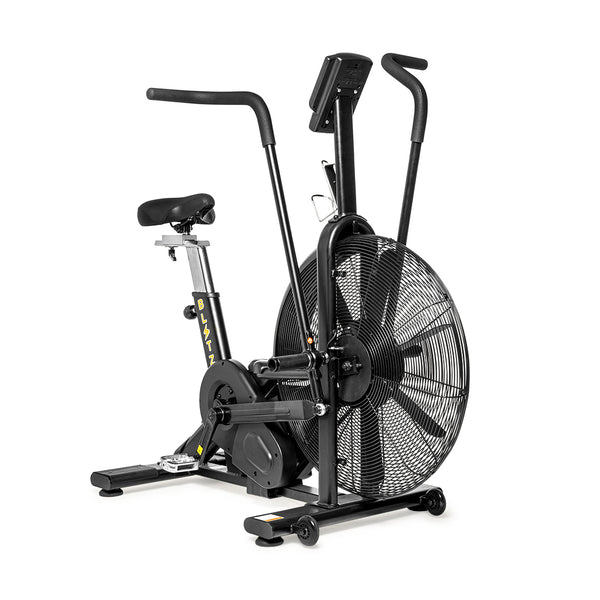So, you’ve decided to convert your basement into a personal gym—awesome move! But before you start hauling equipment down the stairs, you might be wondering: How much space do I actually need for a basement gym?
The short answer is, it depends. Whether you're dreaming of a full-blown iron paradise or just want a space to hit some basic lifts, we’ll break down how to maximize your basement for workouts.
Spoiler alert: even if your basement feels more like a cozy cave, it’s totally possible to set up a killer gym. Let’s get into it!
How Much Space Do You Really Need?
The amount of space you need depends on a few factors: the type of workouts you’re doing, the equipment you want, and how much space you have to work with. Here are a few ballpark estimates based on different workout goals:
1. Basic Setup (Cardio & Light Weights)
If you’re sticking with light dumbbells, resistance bands, and maybe a small cardio machine like a rower or an air bike, you can get by with as little as 50-100 square feet. You don’t need much space for this type of setup—just enough room to move comfortably and store your equipment when not in use.
2. Strength Training Setup (Barbell & Power Rack)
For a powerlifting or strength training setup, where a barbell and power rack take center stage, aim for at least 150-200 square feet. A power rack typically requires a footprint of about 7’x7’, plus extra room to load and unload plates, as well as space for an adjustable bench. If you’re tight on space, investing in a compact rack, like the custom 72" Hydra or Manticore, is a smart move.
3. Full Gym Setup (Multiple Stations)
If you’re going all out and want multiple stations—think squat rack, bench, dumbbells, cable machine, and a cardio machine—you’ll need 250-400 square feet. This will give you enough room for each piece of equipment and allow for smooth transitions between exercises. No one wants to trip over their weights on the way to the treadmill.
Tips for Basements With Limited Space
Basement gyms can be tricky if you’re working with a smaller space or low ceilings, but don’t worry—there’s always a way to make it work. Here are some tips to help you squeeze more out of your space:
1. Go Vertical
If you’re dealing with a small footprint, consider vertical storage. Wall-mounted racks, storage hooks, and shelving units are great for keeping your gym clutter-free and organized. Hang your resistance bands, store your plates on the wall, and maybe even mount your barbell when not in use.
2. Choose Multi-Functional Equipment
When space is tight, multi-functional equipment is your best friend. Think adjustable dumbbells, a folding squat rack, or a cable machine that doubles as a squat stand. The more versatile your equipment, the fewer pieces you’ll need—saving you valuable square footage. The All-in-One Trainer combines cable and barbell training with a unified piece of equipment that fits nicely in a corner.
3. Pick the Right Power Rack
Power racks are a staple in most strength training gyms, but they can be a space hog. That’s why investing in a short rack, like the 72" Hydra or the Manticore Power Rack, is a game-changer for basements with low ceilings. These racks are built for tight spaces, but they don’t skimp on functionality.
4. Invest in a Short Barbell
A traditional 7-foot Olympic barbell might not fit well in basements with limited space or awkward dimensions. To solve this, you can invest in a shorter barbell, like a 6-foot or 5.5-foot barbell. These are designed to be compact, while still allowing you to load plates and perform key lifts like squats, presses, and deadlifts without taking up as much width. It’s especially useful if you're working with a narrow room or want to avoid crashing the bar into your walls.
5. Use Mirrors to Open Up the Space
Mirrors don’t just help you check your form—they can also create the illusion of more space. A large mirror on one wall can make even the smallest basement feel bigger and brighter, while also adding a professional gym vibe.
What to Do About Low Ceilings
Low ceilings are one of the biggest challenges in basement gyms, especially if you’re tall or plan to do overhead presses or pull-ups. Here’s how to work around this common issue:
- Skip the Overhead Presses: If your ceiling is too low to stand and press a barbell overhead, don’t worry. Seated dumbbell presses and landmine presses are great alternatives that work just as well without risking a dent in the ceiling (or your skull).
- Look for Low-Profile Equipment: When ceiling height is an issue, opt for shorter racks, low-profile benches, and compact cable machines. The goal is to avoid any unnecessary overhead space. The custom 72" Hydra Power Rack is specifically designed for low ceilings without sacrificing functionality.
- Floor-Based Exercises: Focus on exercises that don’t require much vertical space. Deadlifts, rows, squats, and bench presses can all be done without worrying about the ceiling height.
The only real limit to having a functional basement gym is your creativity and resourcefulness. Don’t hesitate to get weird.
FAQs About Basement Gym Size
Q: How much space do I need for a squat rack?
A: You’ll need about 50-100 square feet for a squat rack, barbell, and enough space to load/unload plates. If your ceiling is low, look for a short rack like the 72" Hydra.
Q: Can I fit a treadmill in a small basement gym?
A: Yes, but make sure you have at least 40-50 square feet for a treadmill. Foldable treadmills are great space-saving options for smaller basements.
Q: What if I have low ceilings?
A: Opt for a shorter power rack, skip the overhead lifts, and focus on exercises that don’t require much vertical clearance. Multi-functional equipment will also help you save space.



